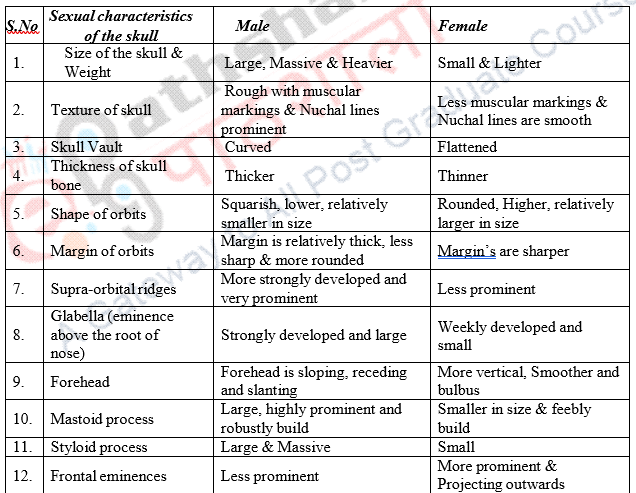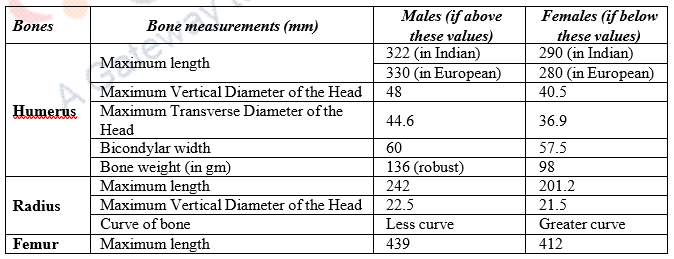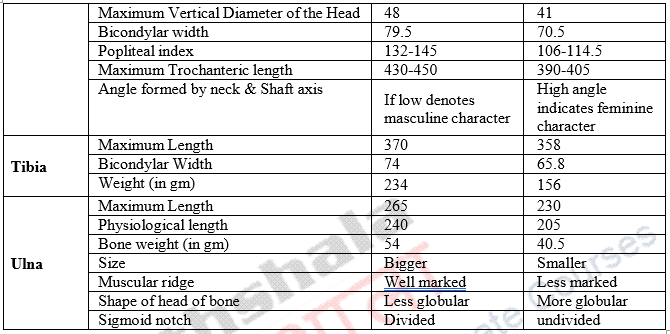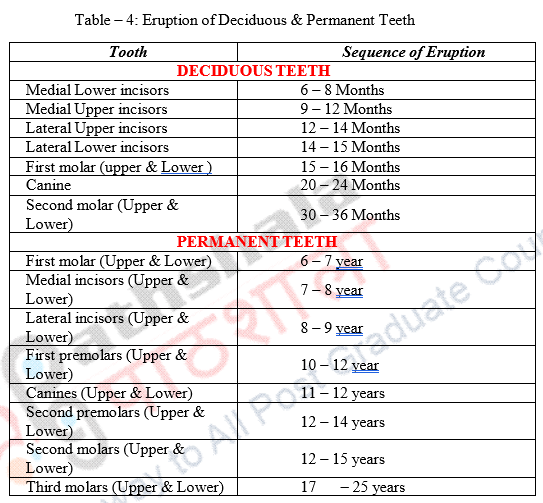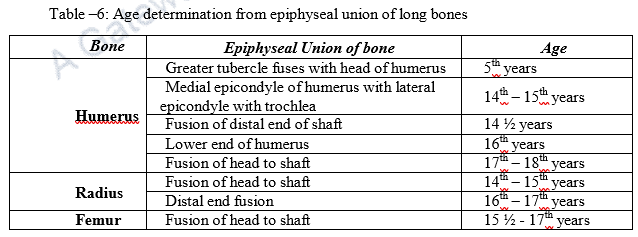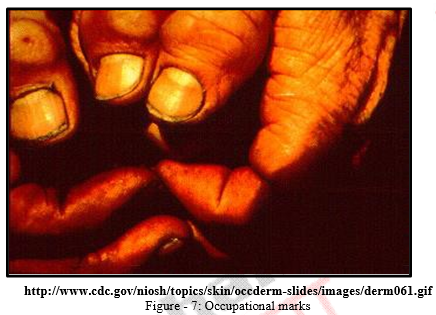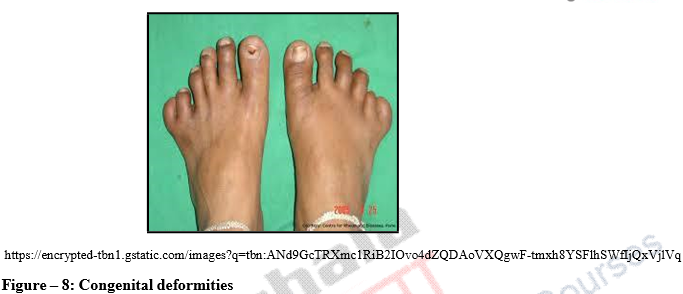5 Establishment of Partial and Complete Identity from Decomposed and Mutilated Bodies.
1. Introduction
Forensic Anthropology is defined as the application of science of physical anthropology to the legal process. The term “forensic” refers to the gathering of scientific physical evidence for use in a court of law and “anthropology” is the study of behavior, origin, and physical and social development of humans. Thus, Forensic Anthropology is the use of anthropology to gather and examine scientific evidence. Forensic anthropologists use a blend of sciences, such as biology, chemistry, physics, anatomy, criminology, medical jurisprudence and forensic medicine to aid in the investigation of crimes.
Definition given by Charles snow in 1973-
“Forensic anthropology is the application of physical anthropologists, specialized knowledge to human, sexual, racial, age and individual’s unusual variation to the problem of medico-legal jurisprudence”.
Definition given by Thomas Stewart in 1979-
“Forensic anthropology as that branch of physical anthropology, which for forensic purpose deals with the identification of more or less skeletionized remains known to be or suspected of being human, beyond the elimination of non-human element”.
Definition given by Douglas H. Ubelaker in 1996
“Forensic anthropology is the application of the science of physical anthropology to the legal process for the identification of skeleton zed remains and related legal structure”.
Forensic anthropology primarily perceive and explain the theories on personal identification, assess the difficulties and relevance of personal identification in a multicultural and biologically heterogeneous context, follow correctly the procedures of personal identification through anthropological methods and techniques, estimate correctly the age, sex and time of death of person(s) involved, predict the identity of an individual to his/her socio-cultural, ethnic, caste, tribal group, based on various cultural and biological markers and employ anthropological concepts and techniques in establishing identities through skeletal, fragmentary and decomposed remains. Thus Forensic Identification or Personal identification is the mainstay of Forensic investigation.
Forensic identification is the subfield of forensic anthropology. It is the process of applying scientific methods to identify humans or products for use inside a courtroom. The definition of the term “forensics” is “for the courts”. Therefore, one of the main purposes of forensic identification is to preserve evidence and the findings that can be drawn from the crime scene or the scene of an accident for use in a courtroom. It is useful here to distinguish between evidence and the individual.
Evidence: It can be defined as any object or statement by a witness that has a bearing in a court of law. Evidence can take two forms: testimonial and physical (real) evidence.
- Testimonial evidence is evidence given in the form of statements made under oath, usually in response to questioning.
- Physical evidence is any type of evidence having an objective existence, that is, anything with size, shape, and dimension.
Individual: Just like blood spatter or a discarded weapon at a crime scene, a lesion on a humerus that was used to determine the identity of an individual or a cut mark on the rib bones suggestive of the circumstances of death constitute “evidence”.
Forensic identification can be compared to personal identification of an individual which refers to the determination of individuality of a person living or dead based on certain characteristics, which are unique to each individual.
Identification of living person
It is necessary in civil courts in case of impersonation in order to unlawfully secure property, life insurance payments or to prolong a lapsed pension, insurance claims, marriage, inheritance, passport, admission in schools, missing persons and in case of disputed sex; and in criminal courts, in connection with absconding soldiers and criminals or person accused of assault, rape, murder, etc., interchange of new born babies in hospitals.
Identification of dead/non-living person is essential or required in case of fire, explosives, bomb-blast injuries, railway accidents, air-crash accidents, foul play, mass disasters, flood, earthquake, war etc. It is foremost important to identify the decomposed & mutilated bodies and also skeletal remains.
Identification can be categorized into two types:
- Complete or Absolute Identification: Complete identification implies the absolute fixation of the personality of, and the determination of the exact place in the community occupied by the individual.
- Incomplete or partial Identification: Partial identification means ascertainment of only some sort of facts about the identity such as race, age, sex, stature while others are still remain unknown.
2. Data which assist in establishment of partial & complete identity from decomposed & mutilated remains.
Identification of decomposed and mutilated remains from any recovered characteristics such as skeletal parts or any bone or any identification marks from the decomposed remains or any unique morphological characteristics particular to an individual will provide help by supplying certain facts or data which might be helpful in establishment of partial & complete identify of the deceased individual.
2.1 Primary Physical Characteristics:
Those characteristics which are very difficult for a person to change during life are referred to as primary physical characteristics such as race, sex, age, stature.
2.1.1 RaceDetermination of race from decomposed and mutilated remains:
Complete identification of race from decomposed and mutilated remains is almost always impossible but if soft parts are available then partial identification of race is possible through careful examination of the following:
Clothing: Clothing proves to be a parameter to identify race as styles of clothing reflect the customs or traditions or rituals of the various races to a certain extent. It is of limited value for decomposed and mutilated remains as most of the times recovered bodies are naked or it is so fragmented that cloth style is difficult to recognize.
Complexion: Complexion many a times indicates race but it has limited application. A comparatively fair complexion may be that of a North Indian whereas darker complexion belongs to South Indian.
Eyes: Colour of the eyes may often help to determine the race of the individual. Indians generally possess black eyes with exception whereas grey or blue eyes indicate that the body is that of a European.
Hair: It is often possible to recognize the race of the individual through the observation of hair, its style, texture, form, length as different race possess a unique style to make up their hair which can provide clue thus can narrow down the investigation such as bobbed hair will always characterized as European.
Teeth: A forensic odontologist tries to identify race from teeth as examination of teeth provide valuable information or peculiarities such as Indians possibly have teeth encrusted with dark brown or black deposit as a result of tobacco chewing. Again artificial dentures present in teeth individualize the teeth and thus partial identification can be done.
Feet: As rural Indians usually go barefooted thus differ from those who habitually wear shoes which many a times provide peculiarities such as formation of bunions and corns which are absent in barefooted individuals, however they bear very thick epidermis, show fissures and cracks ingrained with dirt. This can provide a bit of fact to establish partial identity.
2.1.2 Sex
- From decomposed remains establishment of sex was determined by examining the presence of uterus or prostate is proof of female sex as it can resist decomposition for long time. Forensic experts examine primary and secondary sex characteristics if available and they will possibly establish the gender with higher accuracy due to the development of newer techniques such as DNA examination.
- In case of mutilated remains, when body is cut into many pieces, establishment of identity is simplified when those parts bearing sexual characters are available such as skull, pelvis or long bones.
2.1.2.1 Establishment of partial identity from skull fragment.
Table – 1: Sex Determination from Skull fragment
2.1.2.2 Establishment of partial identity from pelvis.
Table – 2: Sex Determination from pelvis
2.1.2.3 Establishment of partial identity from long bones.
Table – 3: Sex Determination from long bones.
2.1.3 Age
Forensic anthropologist attempt to determine the most approximate age as partial identity from the recovered fragmentary & decomposed remains and will provide age range such as 15 – 17 years as there is no such accurate skeletal clues that allows determination of specific age. And this age range will be narrower if the individual is young whereas wider if old. The reason for this is that during old age regular changes are less common and degenerative changes occur. Immature specimen will be thin and light whereas well formed occipital protuberance, mastoid process and supraorbital ridges suggest an adult individual. In old age i.e. Skull of more than 85 years, all the sutures are fused and the bone become very thin, porous & brittle.
2.1.3.1 Determination of age from cranial sutures
The Sutures of the skull follow a definite sequence & time of closing by which approximate age of the individual can be determined.
Table – 3: Age determination from cranial sutures
2.1.3.2 Determination of age from dentition
Teeth eruption shows definite sequence & time both in deciduous and permanent dentition. Their prediction from the recovered skeletal can provide approximation of age of the decreased individual.
2.1.3.3 Determination of age from epiphyseal union of long bones
It has been established that ossification or the union of epiphysis with the respective shaft is the main guide for age. But this does not yield much evidence beyond 20 years as after attaining maturity, the rate of developmental changes slows down. Epiphyses are growth centres separated from the shaft by a growth plate made up of cartilage. These epiphyses fuse to the shaft of bone at specific ages and thus can provide an estimation of age.
2.1.4 Stature
Stature prediction occupies relatively central place both in identification and anthropological research, necessitated by the medico-legal experts. Stature Estimation is one of the important parameter to identify individuals and is most widely used in forensic examination along with age, sex and ethnicity when dismembered remains are involved. Estimation of stature from different parameters of body are also carried out to establish partial identity of individuals which can help in narrowing down the pool of possible victim matches. Now, Due to non availability of complete skeleton at crime scene in most of the cases, forensic experts are forced to use mathematical models or formulae as compared to anatomical method to derive stature as it is workable even with a single long bone.
Reconstruction of stature from Bone fragment:
The practical method employed now a days for estimating stature uses measurements oflong bones (Arm Bones – Humerus, Radius, ulna & Leg Bones – Femur, Tibia and Fibula) as there is an established linear relationship between the length of these bones and the overall stature of the individual. The more number of long bone measurements obtained from the individual the more accurately the stature will be estimated.
Muller (1935) provided a method for reconstruction of stature from fragmentary remains of long bones. This is done primarily by measuring the long bones and then comparing the measurements with the charts based regression equation or through the use of multiplication factor. (Stature = Maximum length of the long bone x Multiplication factor).
Thus if the maximum length of the femur recovered is 44 cm then the approximate stature will be 167.2 cm (44 x 3.8).
Now a day’s regression equations are employed to predict the stature of unknown skeleton remains as suggested by Trotter and Glesser (1952). Various parameters are used for stature prediction as many a time’s long bones are broken or severely traumatized. Thus scientists have successfully predicted stature from hand length, foot length, length of sternum, length of phalanges etc. Also Hand outlines have been used to predict stature which is a new perspective in forensic examination (Dey & Kapoor, 2015).
2.2 Secondary Physical Characteristics:
Characteristics which can change during life, either deliberately by deceased or as a result of medical/dental interference. These characteristics can be identified in decomposed remains and also in mutilated remains if the soft part for examination is retained. Secondary physical identifiable characteristics for establishing partial & complete identity from fragmentary & mutilated remains include the following.
2.2.1 External peculiarities (such as Moles, Scars, tattoo marks, wounds, occupational marks, etc.)
- Scars: Scars have long been identified as a means to establish identity of individual. A scar is a fibrous tissue covered by epithelium formed as a result of healing process of a wound or injury. Scars are usually devoid of hair and sweat glands.
They are caused by trauma involving the whole skin thickness, by any incised, lacerated, crushing or penetrating injury, by fire or burn or scalds, by corrosive acids or electricity or radiation. They may take any form varying from the stitch mark line of a surgical scar to the broad deforming expanse of a burn scar. The shape of the scar provides clues or information of the weapon causing the scar such as triangular in shape as the stabbing instruments. While describing a scar for the purpose of identification instead of its uniqueness its shape, size and situation should be recorded.
Tattoo marks: These are designs affected by multiple small puncture wounds made through the skin with needles or small penetrating tools dipped in coloring matter. They have always been a valuable means of identification. Their presence leads to the identification of the individual not only during life but also after death as these marks are indelible and they are so permanent that they can be recognized even in decomposed bodies after the skin has peeled off. Tattoo marks many a times indicate religion as many lower strata of some Indians have unique tattoo marks between eye brow ridges, crude designs or dots on the wrists, arms and feet. Again it can indicate his god or worship on the basis of designs of tattoo as individuals naturally like to make tattoo of their god and some belief systems relating to it. A tattoo design may be altered, eliminated or a second one superimposed in an attempt to hide or reveal identity. Now, it should also be remembered that the same design may be found in more than one individual due to same professional tattooist executing the design.
Occupational marks: It is occasionally possible to infer the probable occupation of the person by the condition of its clothes, or by its stains or callosities on his fingers or body. For example hard manual labourers possess horny, stiff and rough hands. Dusts or fragments of organic mineral matter in the clothing or in the pockets and the nature or areas of wearing may indicate the occupation or habits of a person. Tailors have marks of needle pricks on the outer side of terminal phalanges of the left index finger. A callosity on the right middle finger’s last joint where the pencil usually rests is seen on clerks. Fingers generally found stained with dyes or chemicals among photographers, dyers, chemists. Again waxy deposits in the ears and the dusts, debris from the under nails may give some indication of the trade of the individual such as coal miners, asbesters barbers, workers.
Deformities: Deformities whether congenital or acquired form an excellent means of identification and congenital deformities many a times hereditary and are known to occur through successive generation in the same family and thus provide individuality to conceal identity. For example extra fingers and toes, web fingers or toes, birthmarks, cleft-palate, harelip and moles. Acquired deformities such as fractures, healing injuries in bones were leaving unique marks aid in identification. Individual abnormalities of teeth again help in identification.
2.2.2 Somatoscopic observations are used to reveal partial & complete identity from the fragmentary & decomposed remain. These observations are valid for dead bodies which have soft tissue intact and which are ind the initial stage of decomposition.
- Skin colour: The complexion may be fair, wheat colored, dark brown or shallow. Skin colour must be observed atleast at 4-5 sites of the body as sunlight, oil, soap, disease, malnutrition, thickness of the epidermis, climate change affect the color of the skin. Hairs present on the body and Wrinkles tend to make the color of the skin darker.
- Eyes colour: more useful in Caucasians than Negroid & mongoloid races. Colours of the eye are so unique that it can reveal individuality.
- Teeth: very resistant and bear much useful information as it cannot be decomposed and possess information regarding artificial implants or any other peculiarity.
- Hair: Hair for the identification purpose examines colour, style, length, beard/moustache.
3. Superimposition photography:
This new technique for identification purpose is possible in those cases where the skull of the decreased is recovered from fragmentary remains. The photographs of the front and side view of the head of the decreased taken while he was alive are enlarged to the same size as that of the x-ray photo of the skull. These positive portraits and the negatives of the skull are photographically superimposed to determine if they tally in contour of the face and skull. Measurements like interpapillary distance, etcetera, are taken and compared, and the identity of the skull with that of the person in the photograph was judged. The technique is rather difficult but can provide corroborative evidence. Further, the method is of value negatively to exclude a certain person.
4. Examination of Mutilated bodies:
Mutilated bodies may be a result of a criminal act or due to animal bites, or because of an accident or due to pathology &trauma or result of natural calamities like earthquake or due to bomb blast. A forensic anthropologist tries to ascertain if the mutilated parts are human or not. Many a times chemical tests are employed like precipitin test or anti-globulin inhibition test. If the body belongs to humans he elucidates certain following points to conceal his partial or complete identification.
- All mutilated or fragmentary parts should be arranged in anatomical order and it was determined that whether they belong to one individual or more than one individual.
- The mutilated parts are carefully observed and nature, character & colour of the skin if any should be described.
- The manner, by which the mutilated parts are separated such as whether they are lacerated, cut cleanly, hacked, or gnawed through by animals.
- Sex can be determined facile features, body parts, shape of pelvis, external genitalia, bones, soft tissues like uterus or prostate and mammary glands.
- The probable age can be determined from the skull, teeth, ossification of bone, color of the hair
- Identification can be ascertained from tattoo-marks, scars, color of the hair, deformities, fingerprints, stature
- The probable time since death can be determined from the decomposition stage of the mutilated and decomposed parts of the body.
- The cause of death can be determined by the observing the presence of injuries on the body.
- Superimposition technique.
5. Examination of Decomposed bodies:
Decomposed bodies should be handled with care as features may be altered due to advanced stage of decomposition. Sometimes the body is in such an advanced stage of decomposition which poses difficulty in identification. In such cases identification was attempted through features like clothes, tattoo-marks, fingerprints. Many a times forensic anthropologists not able to examine the cause of death and thus they have to mention in criminal reports that due to advanced stage of putrefaction it is not possible to determine the cause of death.
6. Summary:
Decomposed and the fragmentary or mutilated remains many a times so alter the features and the general appearance of the decreased that visual recognition even by the close relatives may be uncertain or impossible. It is important to understand that all methods of identification of mutilated, fragmentary & decomposed remains require that a known characteristics of an individual distinguishing him/her from all other (anti-mortem evidence) when compare with the same characteristics of the unknown decedent (past- mortem evidence). Accomplishment of number of partial identity leads to the determination of complete identity of the individual.
| you can view video on Establishment of Partial and Complete Identity from Decomposed and Mutilated Bodies. |

